Excel File Extension and Format:
A Complete Guide
Home >> Excel Tutorials from Compute Expert >> Excel Tips and Trick >> Excel File Extension and Format: A Complete Guide
In this article, we will discuss completely the excel file extension and format you can use. This file extension and format matter is important because its choice can determine the excel features and content you can use.
Disclaimer: This post may contain affiliate links from which we earn commission from qualifying purchases/actions at no additional cost for you. Learn more
Want to work faster and easier in Excel? Install and use Excel add-ins! Read this article to know the best Excel add-ins to use according to us!
Table of Contents:
Type of Excel File Format and Extension
Many file extensions can be your options in excel. The following is the list and explanation of each file format.| Extension | Format | Description | Can Use Macro? | When You Should Use the Extension? |
|---|---|---|---|---|
| .xls | 1997-2003 Excel Workbook | Excel standard file format when you use excel version 1997-2003 | Yes | When you use excel version 1997-2003 normally |
| .xlsx | Excel Workbook | Excel standard file format when you use excel 2007 and above | No | When you use excel 2007 onwards normally without having to save or access the macro/VBA feature |
| .xlsm | Excel Workbook with an active macro feature | Excel file format for 2007 and above that uses the macro feature | Yes | When you need to save and access macro/VBA feature in excel version 2007 onwards |
| .xlt | Excel Template 1997-2003 | 1997-2003 excel template file format | Yes | When you want to create and save a template for the basis of other excel files in excel 1997-2003 |
| .xltx | Excel Template | 2007 and above excel template file format | No | When you want to create and save a template for the basis of other excel files in excel 2007 and above (without using macro/VBA feature) |
| .xltm | Excel Template with an active macro feature | 2007 and above excel template file format | Yes | When you want to create and save a template as the basis for other excel files in excel 2007 and above (with access to macro/VBA feature) |
| .xlsb | Excel Binary Workbook | 2007 and above excel file format that is saved with binary format (not XML format like usual) | Yes | When you don’t need to access your excel file using other programs. The binary format will make you open and save your excel file faster. It is useful especially your excel file has complex data processing. |
| .xla | 1997-2003 Excel Add-Ins | 1997-2003 excel file format to save Add-Ins | Yes | When you want to create and save Add-Ins for your 1997-2003 excel files |
| .xlam | Excel Add-Ins with an active macro feature | 2007 and above excel file format to save Add-Ins | Yes | When you want to create and save Add-Ins for your 2007 and above excel files |
Excel Versions and the File Extensions They Can Use
Generally, the file extensions that can be used by excel 2007 and above more or less are the same. This is true also for excel version 1997-2003.To summarize, here is the detail of the file extensions that can be used based on the excel version.
| Excel Version | File Extensions That Can Be Used |
|---|---|
| Excel 1997, 2000, 2003 |
|
| Excel 2007, 2010, 2013, 2016, 2019, dst |
|
As the older version, excel 1997-2003 cannot access files with extensions used since the 2007 version. On the opposite, excel 2007 and above can access files with the extensions used by the 1997-2003 excel version.
If you have excel 2003 and want to open the file with extensions used in version 2007 and above, do this. Download the compatibility pack on the Microsoft website. After you download it, you should be able to open the file with extensions for excel 2007 and above.
If you have a version 1997-2000 excel, the compatibility pack from Microsoft cannot be used by you. You should convert first to the extensions used by the 1997-2003 version if you want to open your file.
Excel File Extensions Most Often Used
As default file extensions. xls (for 1997-2003 version) and xlsx (for 2007 and above version) are the excel file extensions most often used.Difference Between xls and xlsx
As two default excel file formats, xls and xlsx have differences. The basic one is xls has a binary file format while xlsx has an XML file format.Microsoft starts using the xlsx file format in excel 2007 after using xls before. Some advantages are gained by excel users with the default format change. This is because, compared to a binary file format, generally XML is:
- Safer, the XML file is more resistant to damage or error. Besides that, its default nature to not approve macro access makes it much harder to be “scrambled” by VBA codes
- Smaller, Microsoft says the xlsx file size is 75 percent smaller compared to xls
- Easier to Access, the XML file is more editable and readable by other software
But, despite the advantages, the XML format in excel also has disadvantages compared to its binary format. Generally, xls has advantages in two aspects:
- Its files are faster to save and open (because of its binary format)
- Can be accessed by all excel versions, old or new
Because xlsx has been optimized by Microsoft, it is better to use if you only use excel 2007 and above. However, if you need to access your file using the older excel version, you should use xls which is more compatible.
Other File Extensions and Formats Supported by Excel
Besides the excel built-in file formats mentioned before, there are other file formats supported by excel. You can save and/or open files with these formats using excel. Some of those file formats with their extensions are:| Extension | Format |
|---|---|
| .xml | Extensible Markup Language (XML) format |
| .csv | Comma-delimiter text format |
| Portable Document Format (PDF) format | |
| .txt | Text format |
| .xps | XML Paper Specification (XPS) format |
| .dbf | dBase file format |
| .dif | Data Interchange Format |
| .ods | Open Document Spreadsheet (ODS) format |
| .slk | Symbolic link format |
| .prn | Lotus format |
However, it must be noted that different excel versions might affect the file extensions supported (some excel versions probably will only support several extensions mentioned above).
How to Change an Excel File Extension
There are two methods given here to change your excel file extension. These two ways and their implementation steps will be explained in the following.Method 1: File Explorer
-
Go to the File Explorer program on your computer. Then, go to the location where the excel file which you want to change the extension is in
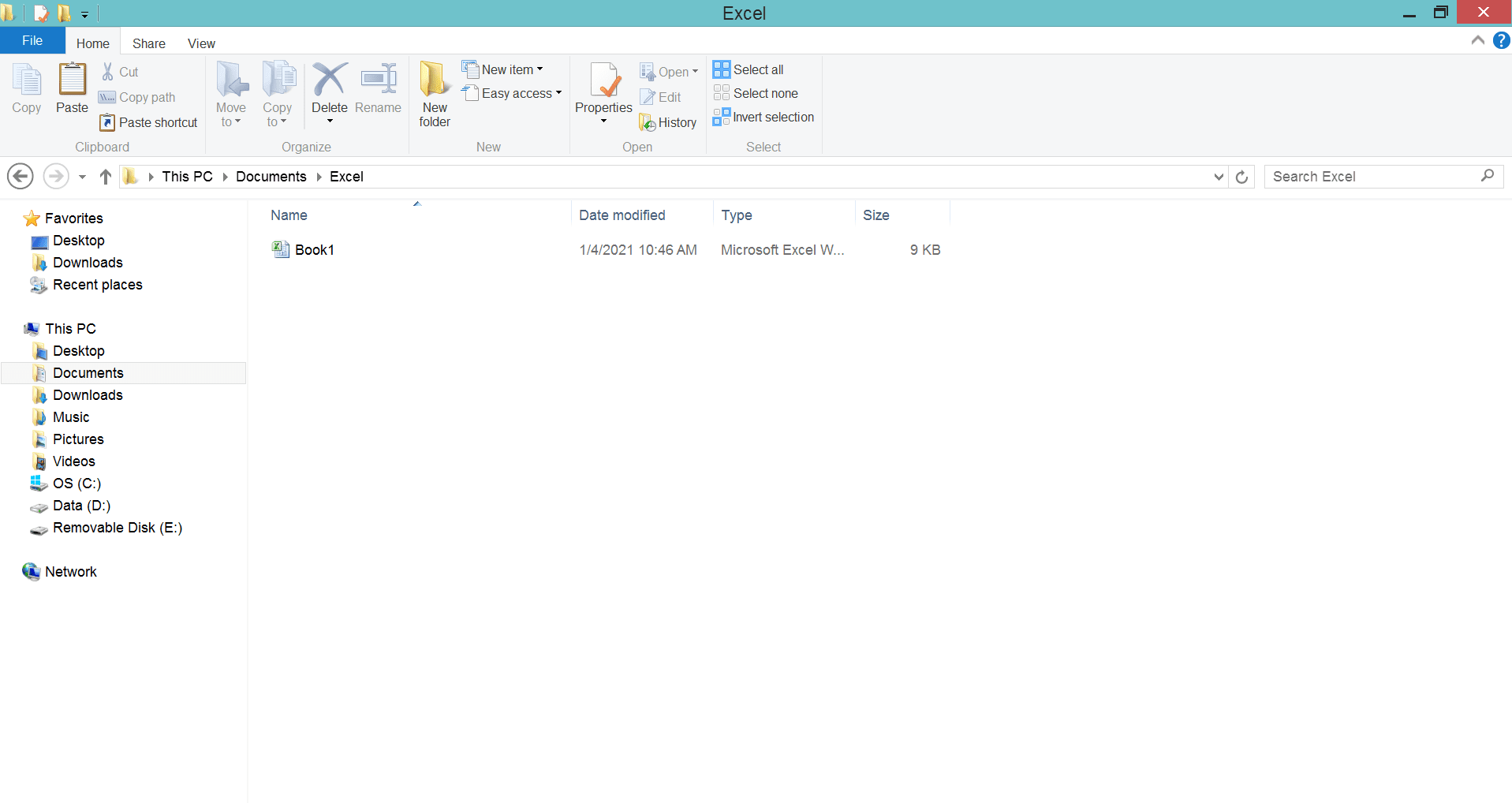
-
Make sure the file extension is shown by your file explorer program
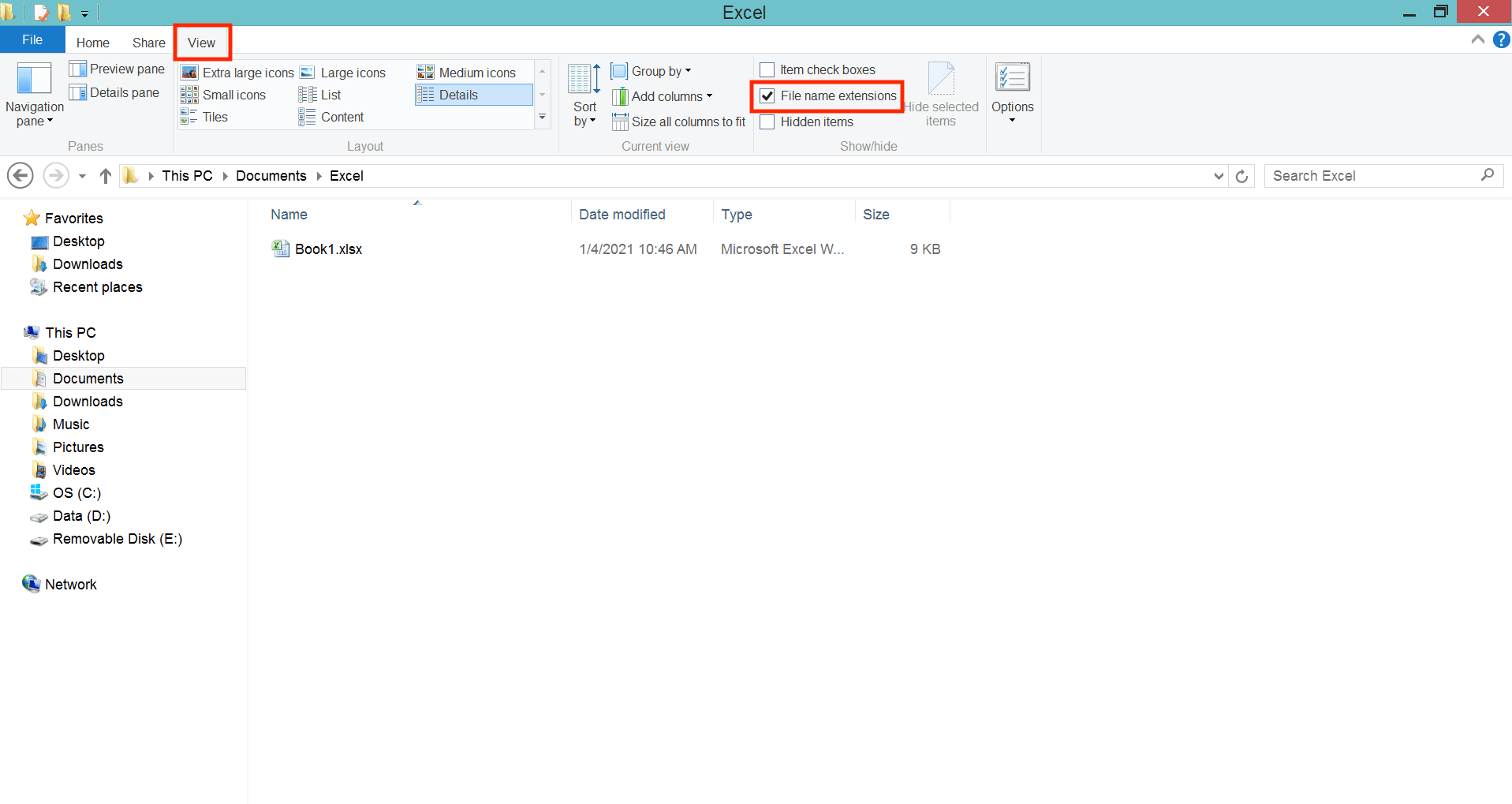
-
Right-click on your excel file and click Rename
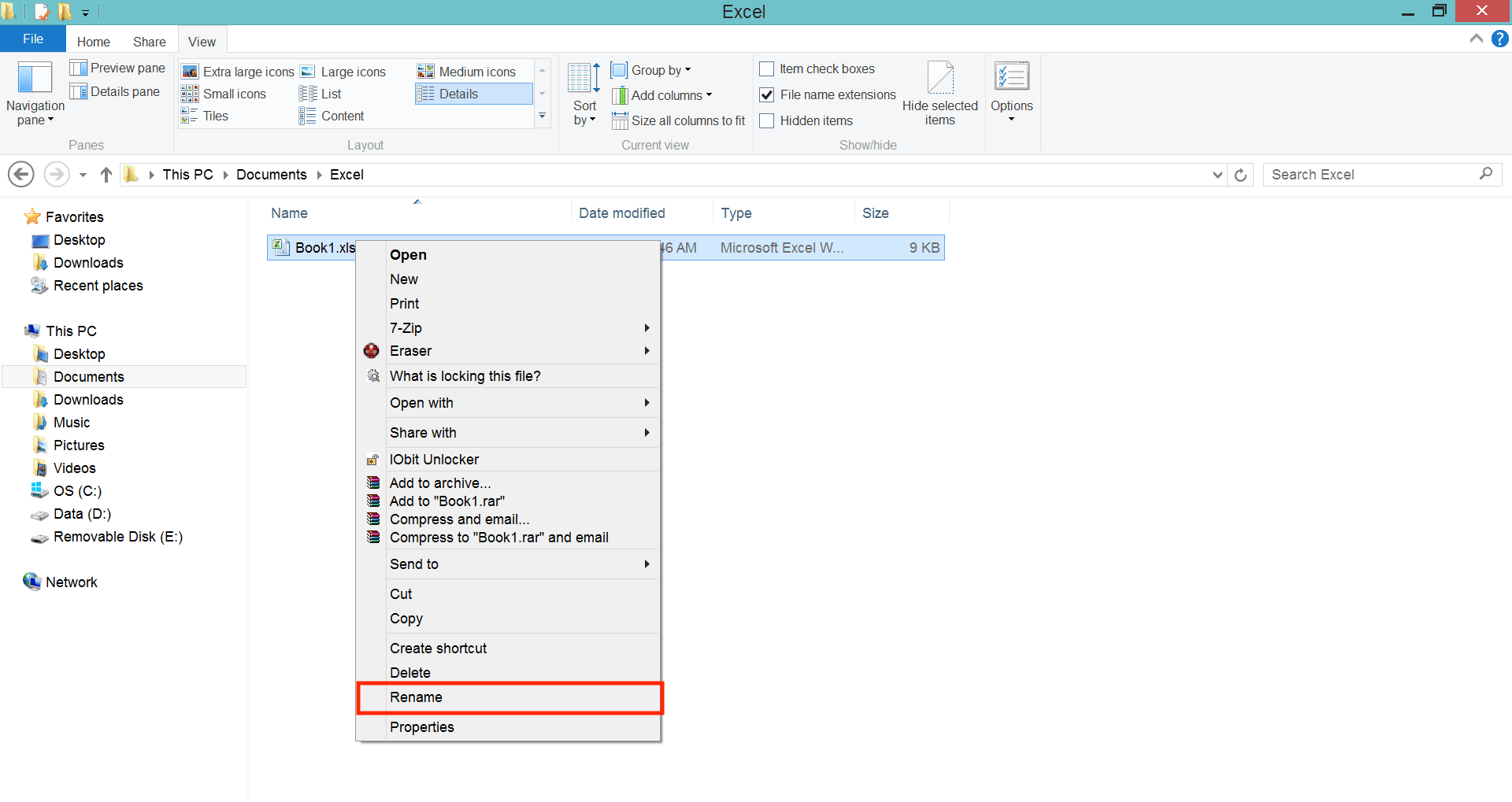
-
Change the file name behind the dot with the extension you want
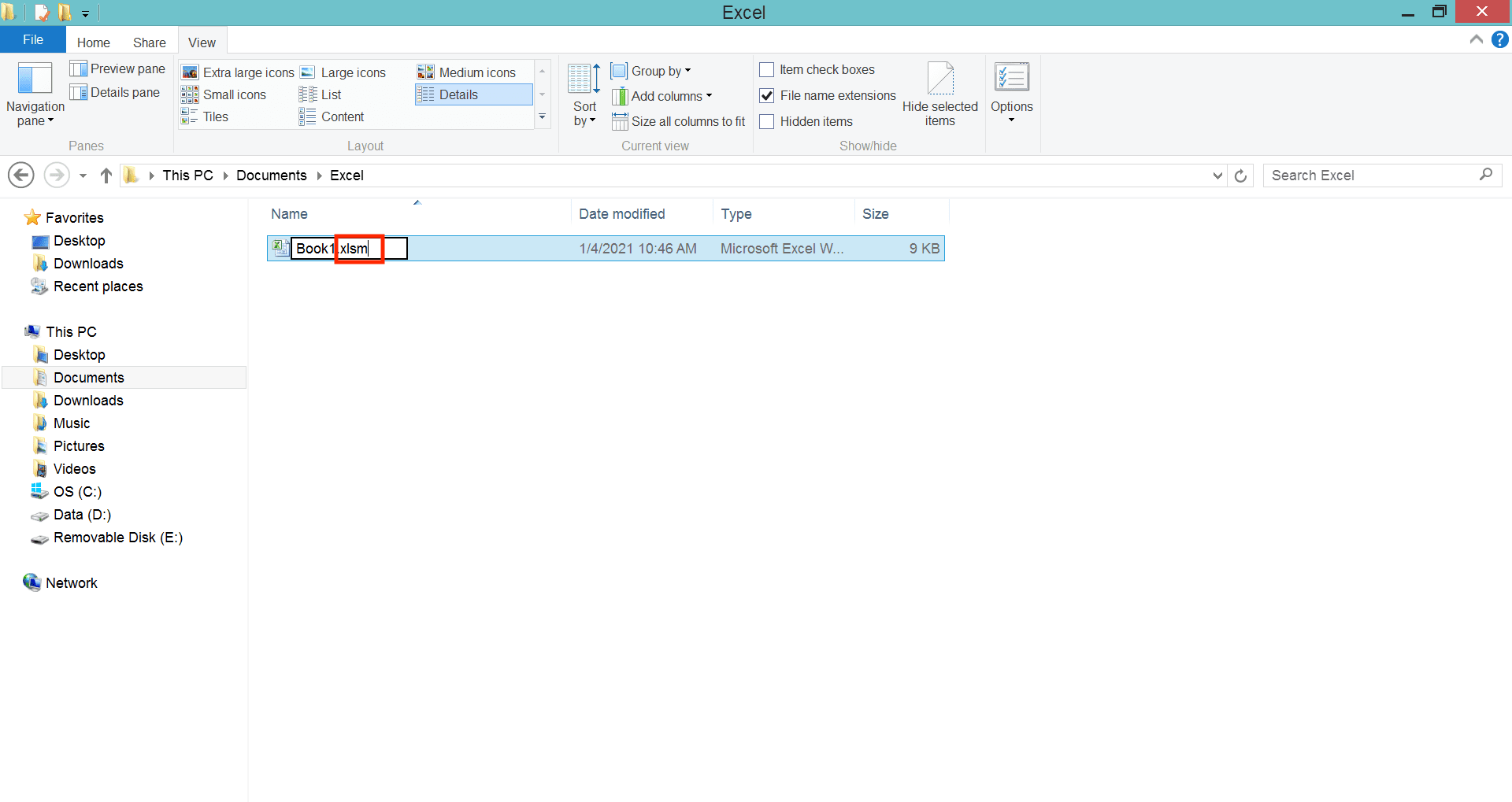
- Click the empty space on your computer screen
-
If there is a warning dialog box shown, click Yes

- Done!
Method 2: Excel Save As
- Open the excel file which you want to change the extension of
-
Click File then Save As
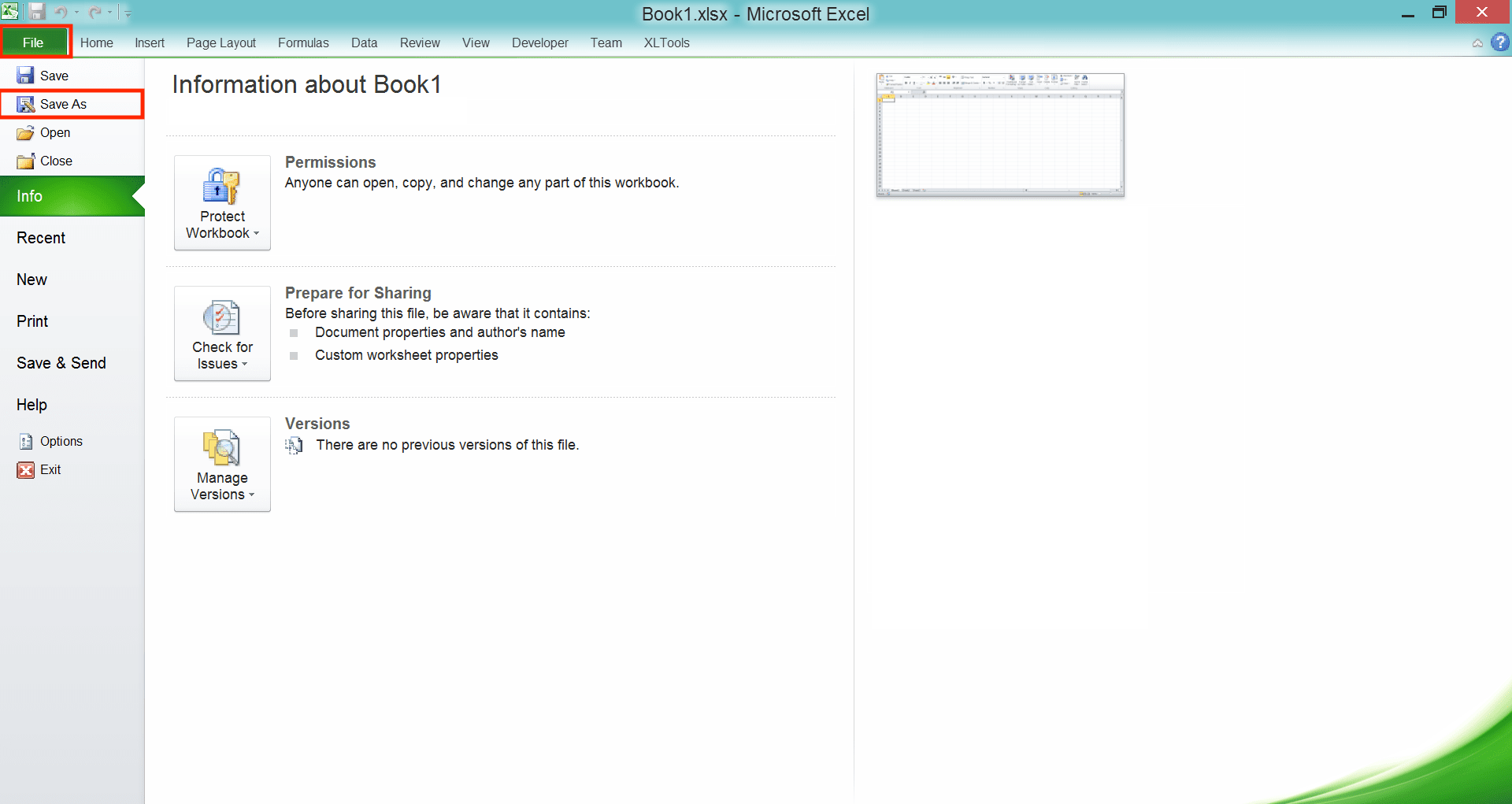
-
On the Save as type: dropdown in the dialog box shown, choose the file format/extension you want
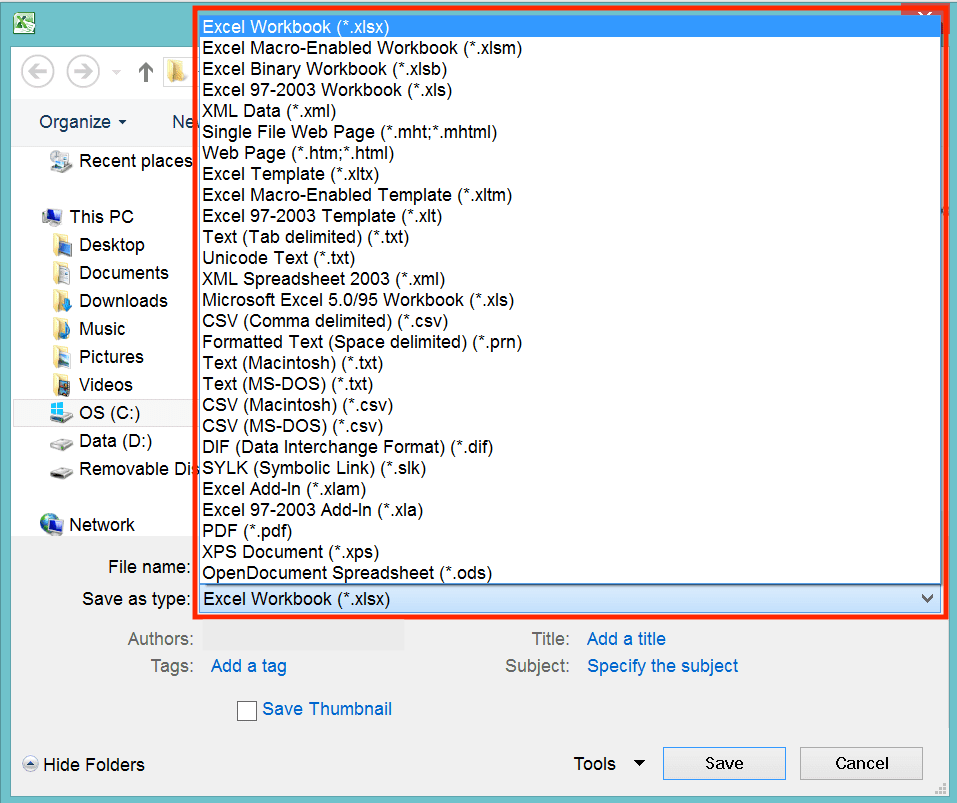
-
Name the file and set the file location as you prefer
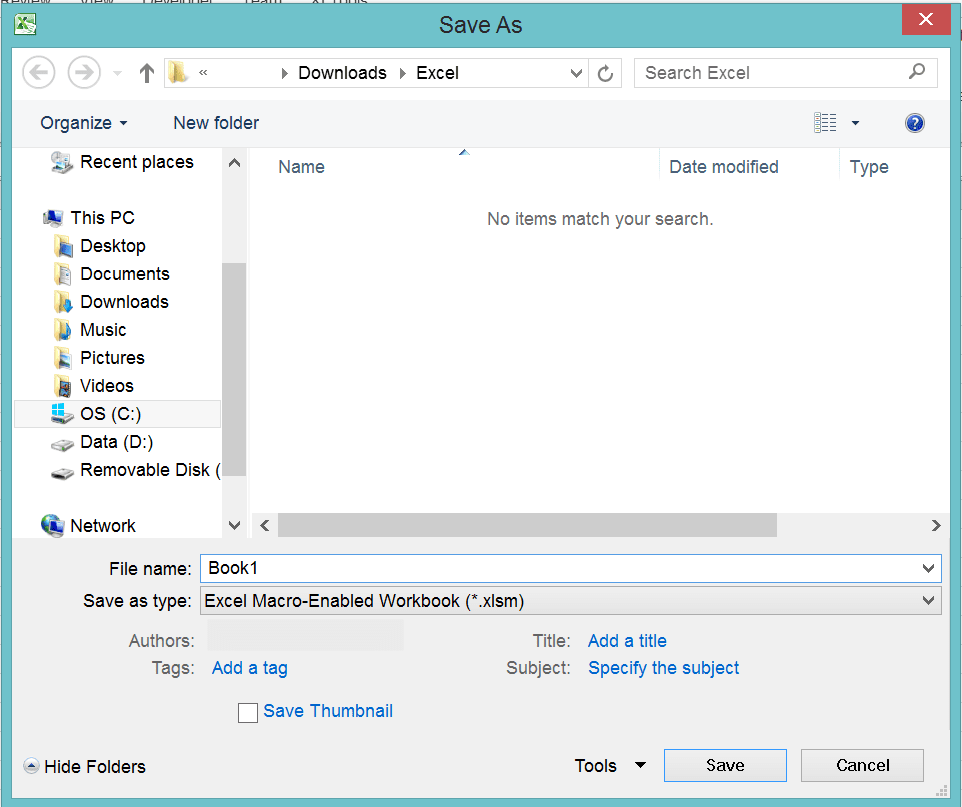
-
Click Save
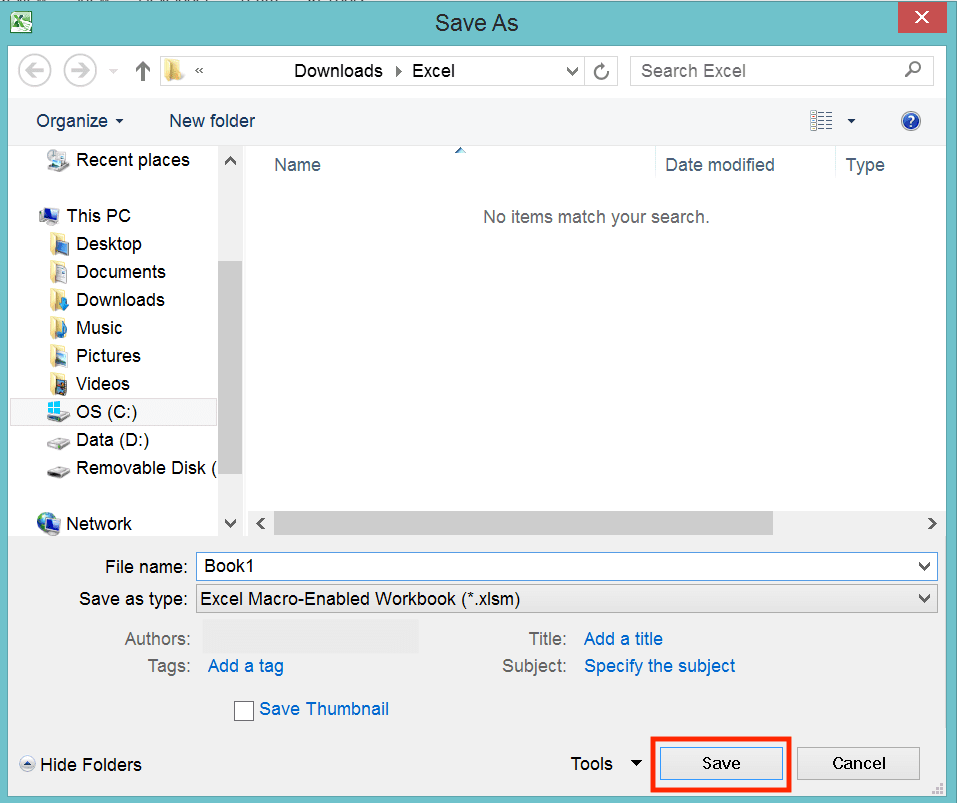
- Done! The excel file with the extension you choose is in the location where you save it just now
Additional Note
Ensure you don’t choose the wrong extension when you want to change the extension of your excel file. You can make your file content hard to access if you choose wrongly!Related tutorials you should learn:














